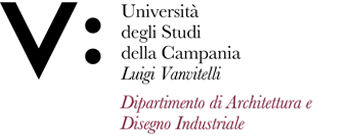Pasquale PAGANO
Insegnamento di SPECIALITY ENGLISH FOR ARCHITECTURE
Corso di laurea magistrale a ciclo unico in ARCHITETTURA
SSD: NN
CFU: 2,00
ORE PER UNITÀ DIDATTICA: 16,00
Periodo di Erogazione: Primo Quadrimestre
Italiano
| Lingua di insegnamento | Inglese |
| Contenuti | Il corso intende fornire agli studenti e alle studentesse le competenze comunicative che si riferiscono ad un livello B1/B2 del “Quadro comune europeo di riferimento per le lingue”. La declinazione delle strutture linguistiche, ma soprattutto del lessico, verso la dimensione artistica, propria del percorso di studi, tende a mettere in grado il discente di esprimersi con confidenza in quei contesti comunicativi propri del suo spazio vitale ed esperienziale. |
| Testi di riferimento | Selezione di materiali di studio e di esercizio tratti da: |
| Obiettivi formativi | Con particolare riferimento allo sviluppo delle attività di speaking, al termine del corso lo studente/la studentessa: |
| Prerequisiti | Non sono richieste specifiche conoscenze di base. |
| Metodologie didattiche | Il corso si terrà in modalità online e sarà basato su lezioni interattive, orientate all’acquisizione di strutture linguistiche e lessico inerente ai contenuti scelti, attraverso i canali della lettura/ascolto. Mediante supporti digitali si provvederà a fornire adeguata riflessione sull’uso della lingua inglese, sempre accompagnata da attività di conversazione. |
| Metodi di valutazione | PRIMA PARTE – Attività di conversazione generale su argomenti riguardanti: |
| Altre informazioni | Il docente provvederà a fornire agli studenti le slides utilizzate durante le lezioni e ulteriori materiali di supporto utili a facilitare lo studio individuale. |
| Programma del corso | - Simple Present and routine activities. |
English
| Teaching language | English |
| Contents | The course aims to provide students with communicative skills which refer to B1/B2 level of Common European Framework of Reference for Languages. Linguistic structures and vocabulary, in particular, will be oriented towards the world of art and design, which is peculiar to the students’ field of interest, and which will make them confident in communicating in English within their own vital and work contexts. |
| Textbook and course materials | Selected materials and activities from: |
| Course objectives | With particular reference to speaking activities, at the end of the course students are expected to be able to: |
| Prerequisites | No specific basic knowledge is required. |
| Teaching methods | Online lectures will be given with the aim to allow students to acquire linguistic structures as well as specific vocabulary, pertinent to the selected topics, through reading and listening activities. Digital tools and materials will be used in order to provide students with an appropriate linguistic reflection and explanation. Speaking activities will be included regularly. |
| Evaluation methods | PART 1: |
| Other information | Extra materials and worksheets will be provided during the course. |
| Course Syllabus | - Simple Present and routine activities. |








